We need your consent to use the individual data so that you can see information about your interests, among other things. Click "OK" to give your consent.
ASTM F615M-95(2013)
Standard Practice for Determining Safe Current Pulse-Operating Regions for Metallization on Semiconductor Components (Metric) (Withdrawn 2022)
Automatically translated name:
Standard Practice for Determining Safe Current Pulse-Operating Regions for Metallization on Semiconductor Components (Metric)
STANDARD published on 1.5.2013
The information about the standard:
Designation standards: ASTM F615M-95(2013)
Note: WITHDRAWN
Publication date standards: 1.5.2013
SKU: NS-55910
The number of pages: 5
Approximate weight : 15 g (0.03 lbs)
Country: American technical standard
Category: Technical standards ASTM
The category - similar standards:
Annotation of standard text ASTM F615M-95(2013) :
Keywords:
current pulse, current pulse burnout, metallization burnout, safe current pulse, semiconductor burnout, ICS Number Code 29.045 (Semiconducting materials)
Additional information
| Significance and Use |
|
4.1 Solid-state electronic devices subjected to stresses from excessive current pulses sometimes fail because a portion of the metallization fuses or vaporizes (suffers burnout). Burnout susceptibility can vary significantly from component to component on a given wafer, regardless of design. This practice provides a procedure for establishing the limits of pulse current overstress within which the metallization of a given device should survive. 4.2 This practice can be used as a destructive test in a lot-sampling program to determine the boundaries of the safe operating region having desired survival probabilities and statistical confidence levels when appropriate sample quantities and statistical analyses are used. 1.1 This practice covers procedures
for determining operating regions that are safe from metallization
burnout induced by current pulses of less than 1-s duration.
1.2 This practice is based on the
application of unipolar rectangular current test pulses. An
extrapolation technique is specified for mapping safe operating
regions in the pulse-amplitude versus pulse-duration plane. A
procedure is provided in 1.3 This practice is not intended to
apply to metallization damage mechanisms other than fusing or
vaporization induced by current pulses and, in particular, is not
intended to apply to long-term mechanisms, such as metal
migration.
1.4 This practice is not intended to determine the nature of any defect causing failure. 1.5 This standard does not purport to address all of the safety concerns, if any, associated with its use. It is the responsibility of the user of this standard to establish appropriate safety and health practices and determine the applicability of regulatory limitations prior to use. |
Similar standards:
Historical
1.11.2013
Historical
1.11.2012
Historical
1.11.2011
Historical
1.6.2011
Historical
1.6.2011
Historical
15.6.2008
We recommend:
Technical standards updating
Do you want to make sure you use only the valid technical standards?
We can offer you a solution which will provide you a monthly overview concerning the updating of standards which you use.
Would you like to know more? Look at this page.


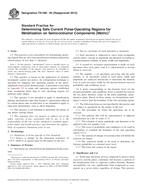
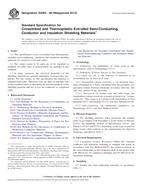 ASTM D3004-08(2013)..
ASTM D3004-08(2013)..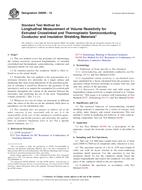 ASTM D6095-12
ASTM D6095-12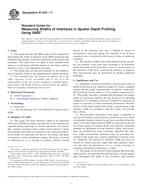 ASTM E1438-11
ASTM E1438-11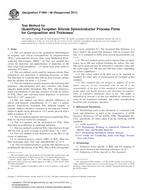 ASTM F1894-98(2011)..
ASTM F1894-98(2011)..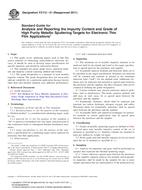 ASTM F2113-01(2011)..
ASTM F2113-01(2011)..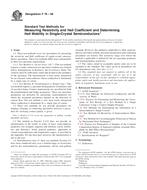 ASTM F76-08
ASTM F76-08
 Cookies
Cookies
